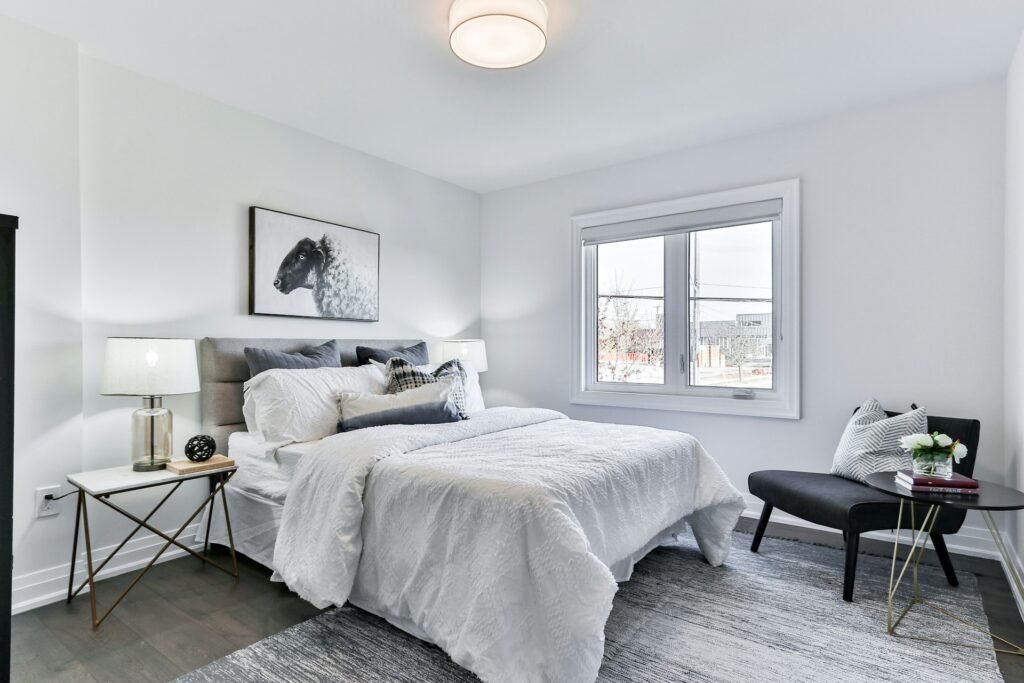In today’s fast-paced property market, first impressions have never been more crucial. With the surge in virtual viewings transforming how we buy and sell homes, potential buyers are making initial judgements about your property within seconds of their screens lighting up. The traditional charm offensive of a well-manicured front garden and gleaming front door has evolved into something far more nuanced and arguably more challenging. Whether you’re working with an experienced estate agent in Kettering or managing viewings yourself, ensuring your home looks its best online has become essential to capturing buyer interest.
The digital revolution in property viewing means that your home’s first impression now extends beyond the physical realm. From the moment a prospective buyer clicks ‘play’ on your virtual tour, every pixel matters. This shift has created new opportunities for sellers to showcase their properties, but it’s also raised the stakes considerably.
The Psychology Behind Virtual First Impressions
Understanding how viewers engage with virtual content is fundamental to success. Unlike physical viewings, where buyers can overlook minor imperfections in favour of a property’s overall feel, virtual viewings offer no such luxury. The camera captures everything with unforgiving clarity, from dust particles dancing in afternoon sunlight to that slightly wonky picture frame you’ve been meaning to straighten for months.
Research suggests that online viewers make subconscious decisions about a property within the first 15 seconds of a virtual tour. This compressed timeframe means that every element visible on screen must work harmoniously to create an immediate sense of desirability. The challenge lies not just in making your home look presentable, but in ensuring it photographs and films beautifully under various lighting conditions.
Lighting: The Foundation of Virtual Success
Lighting transforms spaces in ways that many homeowners underestimate. Natural light remains the gold standard for virtual viewings, but it’s the interplay between natural and artificial lighting that creates truly compelling footage. Before any cameras roll, conduct a lighting audit of your home throughout different times of day.
Morning light tends to be softer and more flattering, whilst harsh afternoon sun can create unwanted shadows and overexposed areas that make rooms appear smaller on screen. Consider investing in additional lamps or adjusting existing light fixtures to eliminate dark corners that might appear ominous through a camera lens. Remember, viewers can’t physically walk into a space to appreciate its true dimensions they’re entirely reliant on what the camera captures.
Decluttering: Less is Definitively More
The art of decluttering for virtual viewings extends beyond basic tidiness. Cameras have a peculiar way of amplifying visual noise, making busy spaces appear chaotic and overwhelming. What might feel cosy and lived-in to you could translate as cramped and cluttered to potential buyers viewing on their devices.
Focus on creating clean sight lines throughout your home. This means removing family photographs, personal collections, and anything that might distract from the property’s architectural features. The goal isn’t to create a sterile environment, but rather to provide a blank canvas upon which viewers can project their own living aspirations.
Pay particular attention to surfaces—kitchen worktops, coffee tables, and window sills should be completely clear or feature just one or two carefully chosen decorative elements. This approach helps create a sense of spaciousness that translates beautifully through virtual mediums.
Strategic Staging for the Digital Age
Traditional property staging principles apply to virtual viewings, but with additional considerations. Furniture arrangement becomes even more critical when viewed through a camera lens, as certain angles can make rooms appear larger or smaller than they actually are.
Create clear pathways through rooms and ensure that key features—fireplaces, large windows, built-in storage—are easily visible and not obscured by furniture. Consider the camera’s perspective when arranging seating areas; what looks natural in person might appear awkward when viewed from the fixed angles typically used in virtual tours.
Colour coordination takes on heightened importance in virtual viewings. Bold patterns or clashing colours that might add character in person can be distracting on screen. Opt for neutral, coordinated colour schemes that create a cohesive flow throughout the virtual tour.
Technical Considerations and Common Pitfalls
The technical quality of your virtual viewing can make or break a potential sale. Poor image quality, shaky camera work, or inadequate lighting can undermine even the most beautifully prepared spaces. If you’re working with professional photographers or videographers, discuss your goals and concerns beforehand.
Ensure that all electronic devices are switched off or positioned to avoid screen glare. Remove or minimise reflective surfaces that might create unwanted visual effects. Consider the audio quality as well—background noise from traffic, construction, or household appliances can be surprisingly distracting in virtual tours.
Common mistakes include rushing the preparation process, neglecting less prominent rooms like bathrooms or spare bedrooms, and failing to view the completed virtual tour from a buyer’s perspective before it goes live.
The Lasting Impact of Digital Excellence
The effort invested in preparing your home for virtual viewings extends far beyond the initial online presentation. High-quality virtual content becomes a lasting marketing asset, often remaining online long after your property has sold. This content influences not just immediate buying decisions but also contributes to your local area’s digital property portfolio.
Conclusion
Virtual viewings have fundamentally altered the property landscape, placing unprecedented importance on digital first impressions. Success requires a combination of traditional staging wisdom and modern technical awareness. By understanding how cameras capture spaces, optimising lighting conditions, and presenting your home as a clean, welcoming canvas, you’ll create virtual viewing experiences that not only attract potential buyers but inspire them to take the next step towards making your property their new home.

